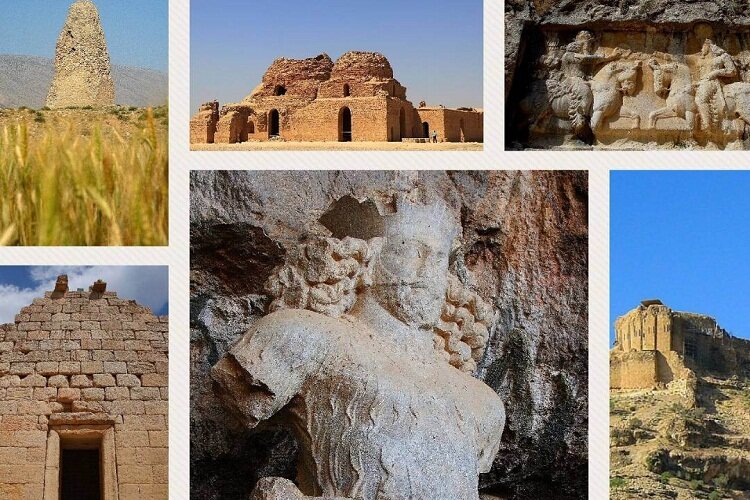Sassanid Archaeological Landscape of the Fars Region: government funds allocated for restoration

TEHRAN – The Iranian government has allocated 430 billion rials (about $715,000) for restoration and conservation projects on the Sassanid Archaeological Landscape of the Fars Region, a UNESCO World Heritage site.
The multi-faceted project is aimed to help protect and restore historical sites and related tourist spaces in the counties of Firuzabad, Kazerun, and Sarvestan, all located within the southern Fars province.
Mohammad Sabet Eqlidi, the provincial tourism chief, announced the funding during a press conference held on Saturday. The official emphasized the substantial developments that the funding would bring to the restoration and conservation of the Sassanid sites in the region.
He expressed optimism about the future of these ancient sites, saying, "We will soon witness significant changes and positive developments in the Sassanid Archaeological Landscape of Fars." The allocated funds will facilitate extensive protective and restorative measures for the historical monuments, aiming to enhance their preservation and tourist accessibility.
Of the total 430 billion rials allocated, 370 billion are sourced from the Social Responsibility Fund of the Iranian Oil Ministry, underscoring the national importance of preserving cultural heritage. An additional 60 billion rials will be provided from national and provincial budgets to support the restoration initiatives.
The comprehensive restoration plans include several key projects across the region:
Firuzabad: Restoration efforts will focus on safeguarding the Sassanid rock reliefs in Tangab Valley. Additionally, plans are underway to organize and implement safe visitor pathways and access routes to the architectural spaces of the Ardeshir Palace in Firuzabad.
Bishapur: In this historical city, pathways and access points to the government fortress's architectural spaces will be organized, ensuring safe visits and better preservation of the site's unique features.
Sarvestan: The projects will involve creating dual-purpose pathways for both conservation and tourism at the Sassanid Palace's brick dome, enhancing visitor experiences while safeguarding the structure.
The Sassanid era (224-651 CE) is of very high importance in the history of Iran. Under the Sassanids, Persian art and architecture experienced a general renaissance. Architecture often took grandiose proportions, such as some palaces located in Ctesiphon, Firuzabad, and Sarvestan, which are amongst the highlights of the ensemble.
Crafts such as metalwork and gem engraving grew highly sophisticated, yet scholarship was encouraged by the state. In those years, works from both the East and West were translated into Pahlavi, the language of the Sassanians.
The Sassanid archaeological landscape also represents a highly efficient system of land use and strategic utilization of natural topography in the creation of the earliest cultural centers of the Sassanid civilization.
In 2018, UNESCO added an ensemble of Sassanian historical cities in southern Iran — titled “Sassanid Archaeological Landscape of Fars Region”-- to its World Heritage list. The ensemble comprises eight archaeological sites situated in three geographical parts of Firuzabad, Bishapur, and Sarvestan. It reflects the optimized utilization of natural topography and bears witness to the influence of Achaemenid and Parthian cultural traditions and Roman art that later made a significant impact on the architecture and artistic styles of the Islamic era.
AM
